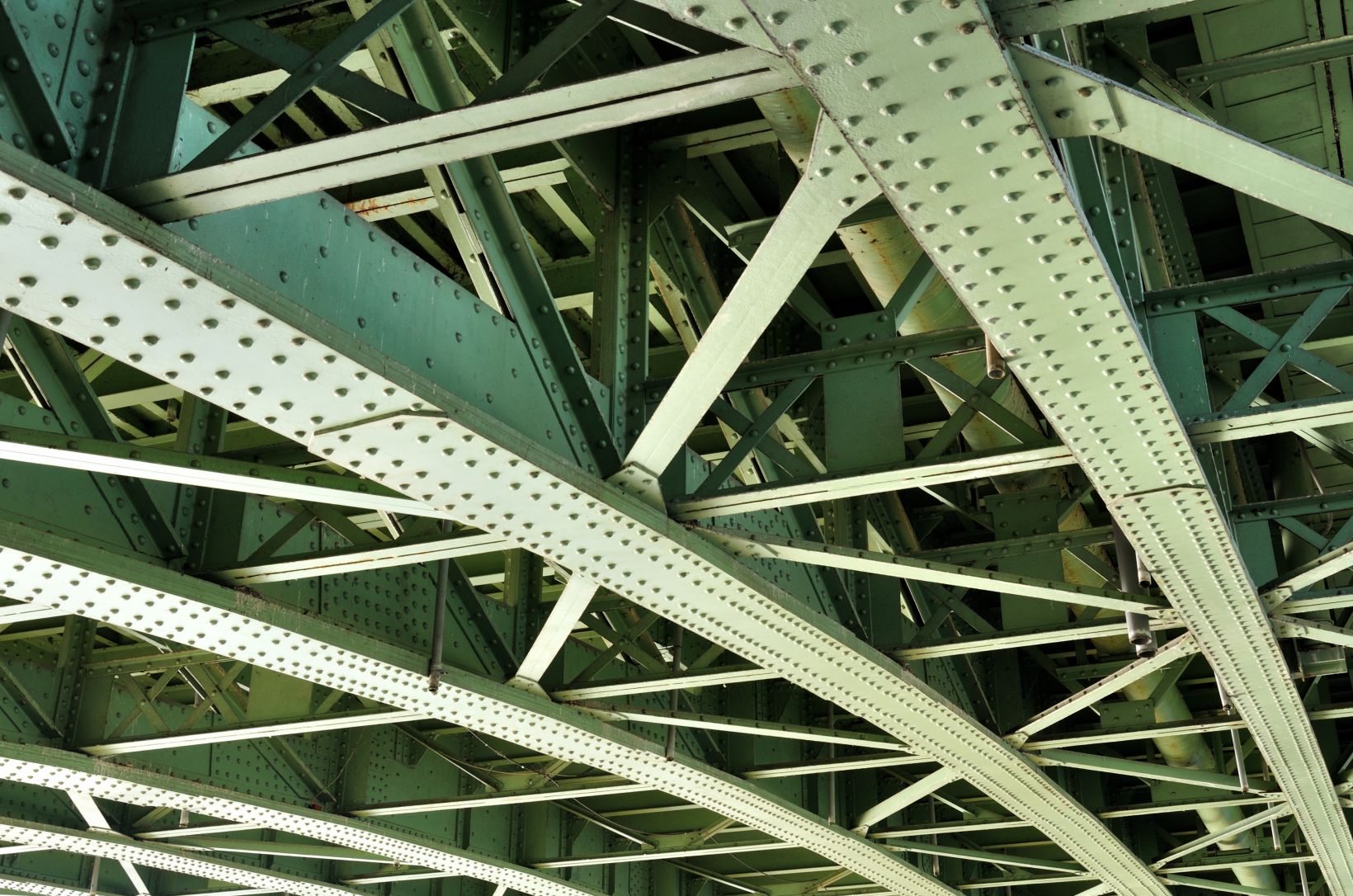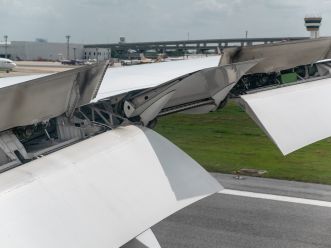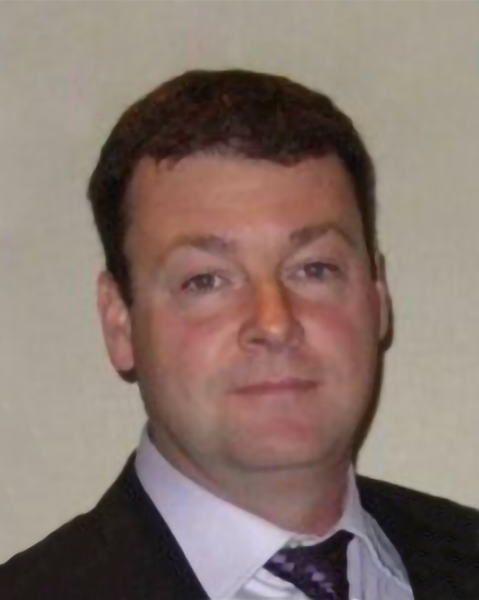EWI is a US-based engineering service provider. Its experts use advanced tools and methods to perform engineering inspections and assessments for purposes such as failure analysis and design optimization. When evaluating critical structures such as bridges, aircraft, and power generation turbines, engineers must have a thorough understanding of a factor that significantly impacts their life span—cyclic loading. Cyclic loading is the repeated and regular or fluctuating application of force at certain locations. For example, with a bridge, the loading comes from the vehicles constantly traveling across it, and with an aircraft’s wings, stress comes from variations in air pressure.
Over time, the stress of cyclic loading can induce fatigue cracking in the structure.
EWI strives to stay at the forefront of new technology to ensure that its engineers have the most effective and efficient evaluation tools at their disposal. Oleg Volf, a principal engineer at EWI, recently led his nondestructive evaluation (NDE) team in testing the OmniScan™ X3 phased array flaw detector’s total focusing method (TFM) imaging capabilities.
Oleg and his team wanted to see if and how TFM could help improve their ability to measure fatigue cracking. Increasing their measurement accuracy, for example, could contribute to a better understanding of crack growth rates and propagation, improving the precision of their failure analysis.
One tool that engineers use to reliably monitor crack growth is the clip gauge. The clip gauge is inserted in the mouth of the crack and the voltage readings are used to measure changes in the material’s compliance. A clip gauge was used as a base comparison for this experiment.
Crack Growth Measurement Comparing Phased Array and TFM
In their testing laboratory, the EWI team set up a hydraulic test frame and programmed it to apply incrementally increasing pressure to the test specimen (an ASTM E1820 fracture toughness testing standard) to simulate fatigue crack growth. You can find more details about the experiment, including the equipment used, the methodology, and the results, in this case study.
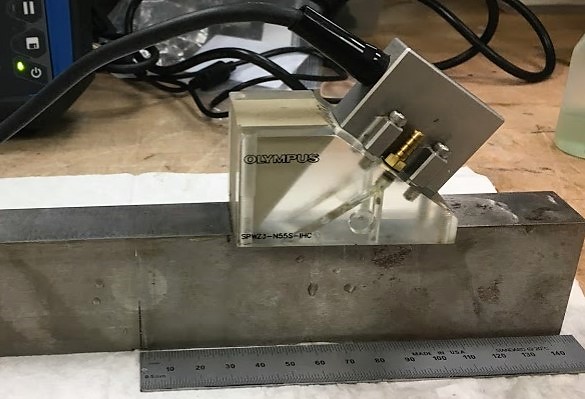
Phased array probe, wedge, and specimen that EWI used for their fatigue crack growth testing
The OmniScan™ X3 flaw detector was used measure the crack growth and compare the results of the conventional phased array (PA) technique versus TFM imaging. They used a conventional PA sectorial scan and TFM TT (pulse-echo) TT-T (self-tandem) wave modes. Measurements were taken at intervals and compared against the clip gauge.
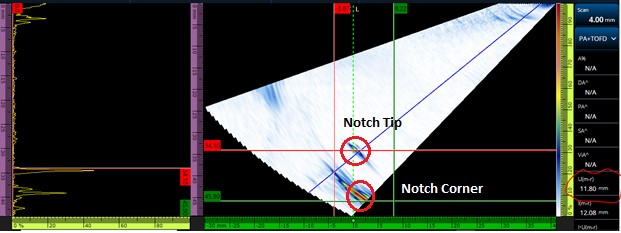
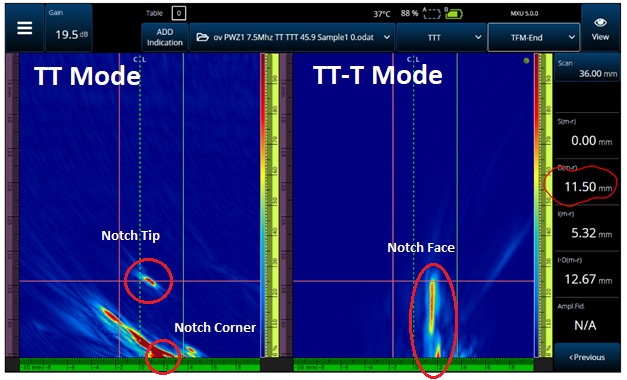
PA S-scan (top) and TFM imaging of the specimen (bottom) using the OmniScan™ X3 flaw detector
Improved Insights on the Nature of Cracks
At the experiment’s conclusion, Oleg summarized the advantages of TFM for fatigue crack assessments:
- Simplifies the data collection process compared with methods, such as clip gauges, cameras, and electric-potential drop (EPD) sensors, that measure the crack through indirect properties and tend to require meticulous setup and calibration.
- Accurate and reliable measurements. In fact, the results of TFM proved to be more accurate than the PA and the clip-gauge methods by a thin margin
- Eases data interpretation and accessibility due to TFM’s improved visual presentation, which clearly shows the crack’s orientation (angle, degree of branching, etc.), giving engineers valuable information on the nature of the propagation (even those that aren’t experts in ultrasonic testing analysis).
Oleg underlined the importance that, “the improved resolution and accuracy obtained with FMC/TFM methods for inspection of fatigue-sensitive structures offers the potential for increased accuracy in fatigue crack detection and sizing, which would correspondingly improve the accuracy of engineering life assessments based on those crack measurements.” 1
The engineers at EWI say they intend to conduct further tests using TFM to substantiate these findings and to examine its application to other more complex fatigue crack geometries. This preliminary study, however, gives a good indication that the insights engineers gain through TFM imaging can contribute to safer infrastructure and help improve structural design.
1Volf, Oleg. EWI Technical Insights. “Crack Growth Monitoring with Phased Array Total Focusing Method (TFM).” July 2020.

